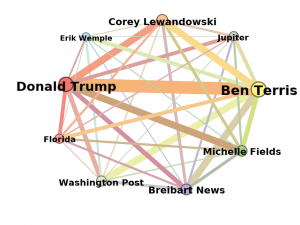Rudy Arthur won a grant under the AI for Climate Action call from the Turing Institute. Climate change and ecological degradation are already affecting poor and vulnerable people across the world and demand immediate action. This project will apply data science and machine learning techniques to link satellite imaging to rich datasets held by two community-led organisations in rural East Africa; The International Small-Group and Tree Planting Program (TIST) and The Northern Rangelands Trust (NRT). The aim is to understand the socio-ecological mechanisms that promote resilience to climate change and to demonstrate the utility of machine learning and AI for monitoring the UN Sustainable Development Goals (SDGs) and help drive future growth and expansion of TIST.
TIST Program Growth around Mount Kenya from 2005-2019 from TIST Program on Vimeo.


